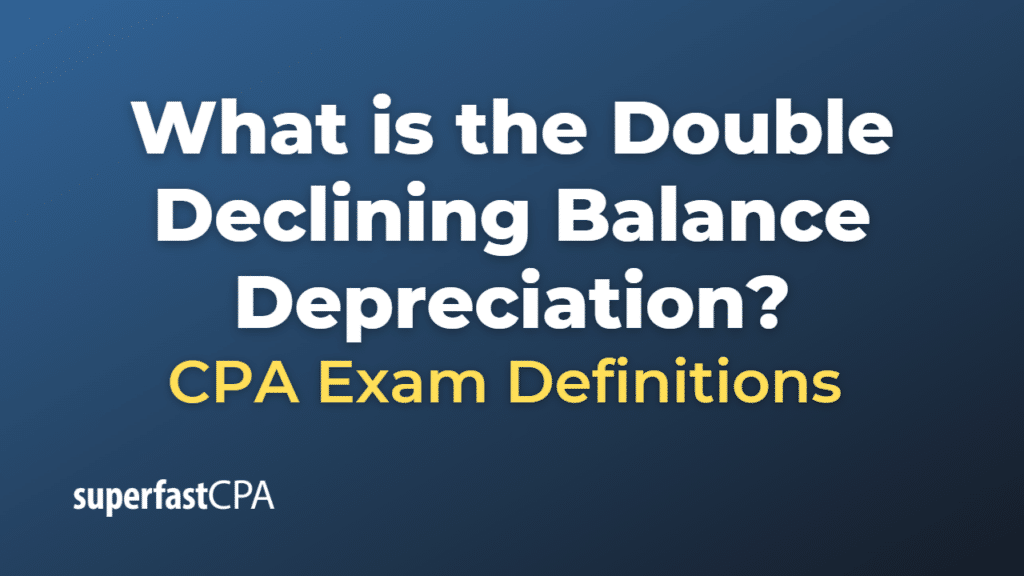Double Declining Balance Depreciation
Double declining balance depreciation is an accelerated depreciation method that recognizes more depreciation expense in the early years of an asset’s life and less in the later years. This approach is a realistic reflection of many assets’ usage patterns, as assets are often most heavily used when they are new.
The double declining balance method gets its name because it doubles the straight-line depreciation rate. The straight-line method assumes equal depreciation each year over the asset’s useful life.
Here’s the formula for the double declining balance method:
Depreciation Expense = 2 * (Straight-Line Depreciation Rate) * (Book Value at Beginning of Year)
The straight-line depreciation rate is calculated as 1 divided by the useful life of the asset.
For example, if an asset has a useful life of 5 years, the straight-line depreciation rate would be 1 / 5 = 20%. Therefore, the double declining balance rate would be 2 * 20% = 40%.
Then, to calculate the depreciation expense for a year, you multiply the double declining balance rate by the book value of the asset at the beginning of that year.
It’s important to note that the salvage value (the estimated value of the asset at the end of its useful life) is not considered in the depreciation calculation each year. However, the total amount depreciated over the asset’s life cannot exceed its original cost minus the salvage value.
Example of the Double Declining Balance Depreciation
Let’s say a company purchases a machine for $10,000. The machine has a useful life of 5 years, and the company estimates a salvage value of $1,000 at the end of its useful life.
- First, calculate the straight-line depreciation rate: 1 / 5 (useful life in years) = 20%.
- Then, calculate the double declining balance rate: 2 * 20% = 40%.
- For the first year, the depreciation expense is: $10,000 (beginning book value) * 40% (double declining balance rate) = $4,000.
- For the second year, the depreciation expense is: ($10,000 – $4,000) * 40% = $2,400.
- For the third year, the depreciation expense is: ($10,000 – $4,000 – $2,400) * 40% = $1,440.
- For the fourth year, the depreciation expense is: ($10,000 – $4,000 – $2,400 – $1,440) * 40% = $864.
- For the fifth year, you would typically calculate it the same way as previous years, which would be: ($10,000 – $4,000 – $2,400 – $1,440 – $864) * 40% = $518.40. However, this would bring the total depreciated value to $9,212.40, which is $212.40 more than the depreciable base ($10,000 – $1,000 salvage value). Therefore, in the final year, you would adjust the depreciation expense to bring the book value down to the salvage value. The depreciation for the fifth year would thus be $1,296 ($10,000 – $4,000 – $2,400 – $1,440 – $864).
This example simplifies the calculations for the sake of clarity, but it should give you a basic understanding of how the double declining balance depreciation method works. Please note that specific rules and methods for calculating depreciation can vary based on jurisdiction and specific accounting standards.













